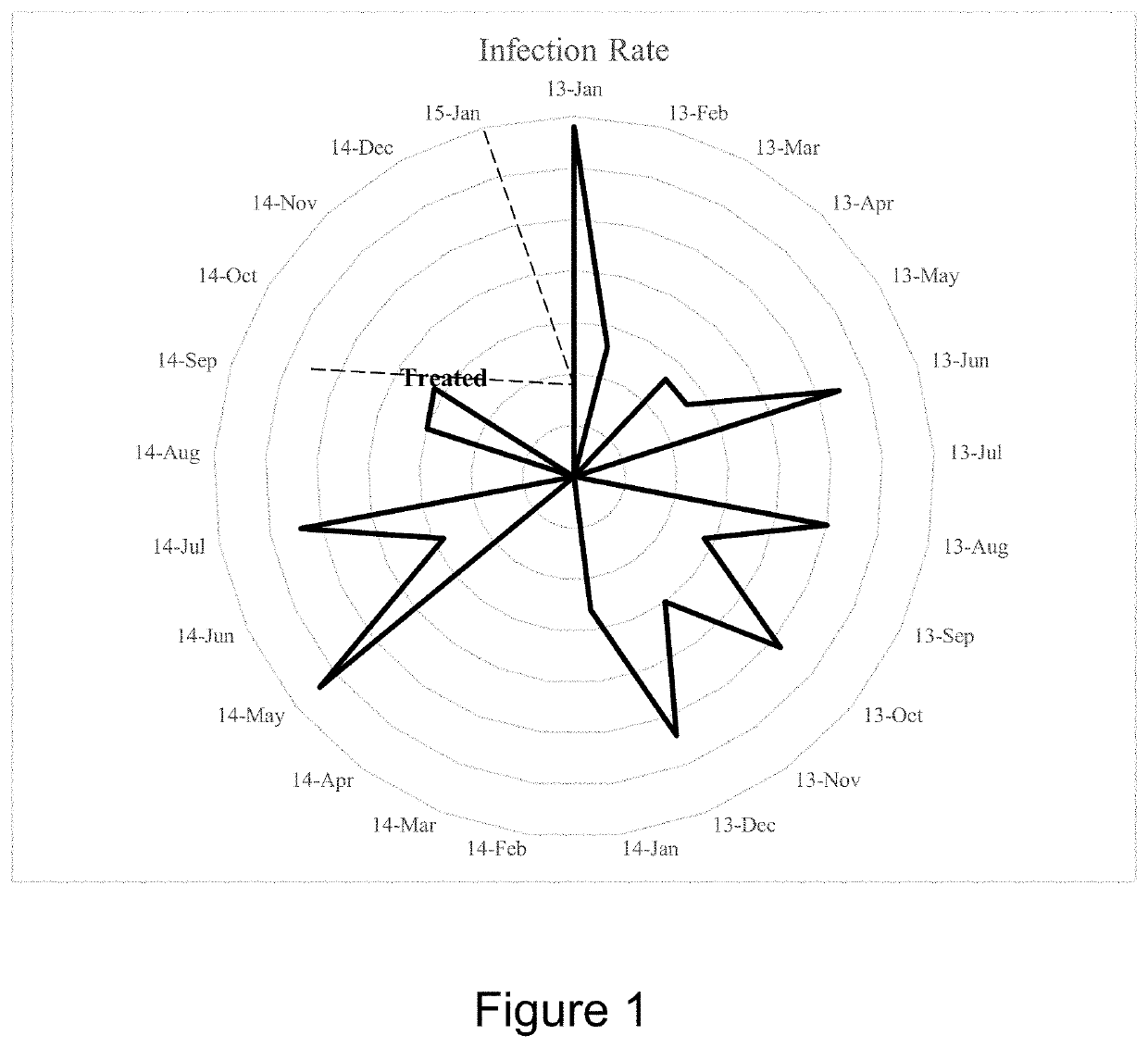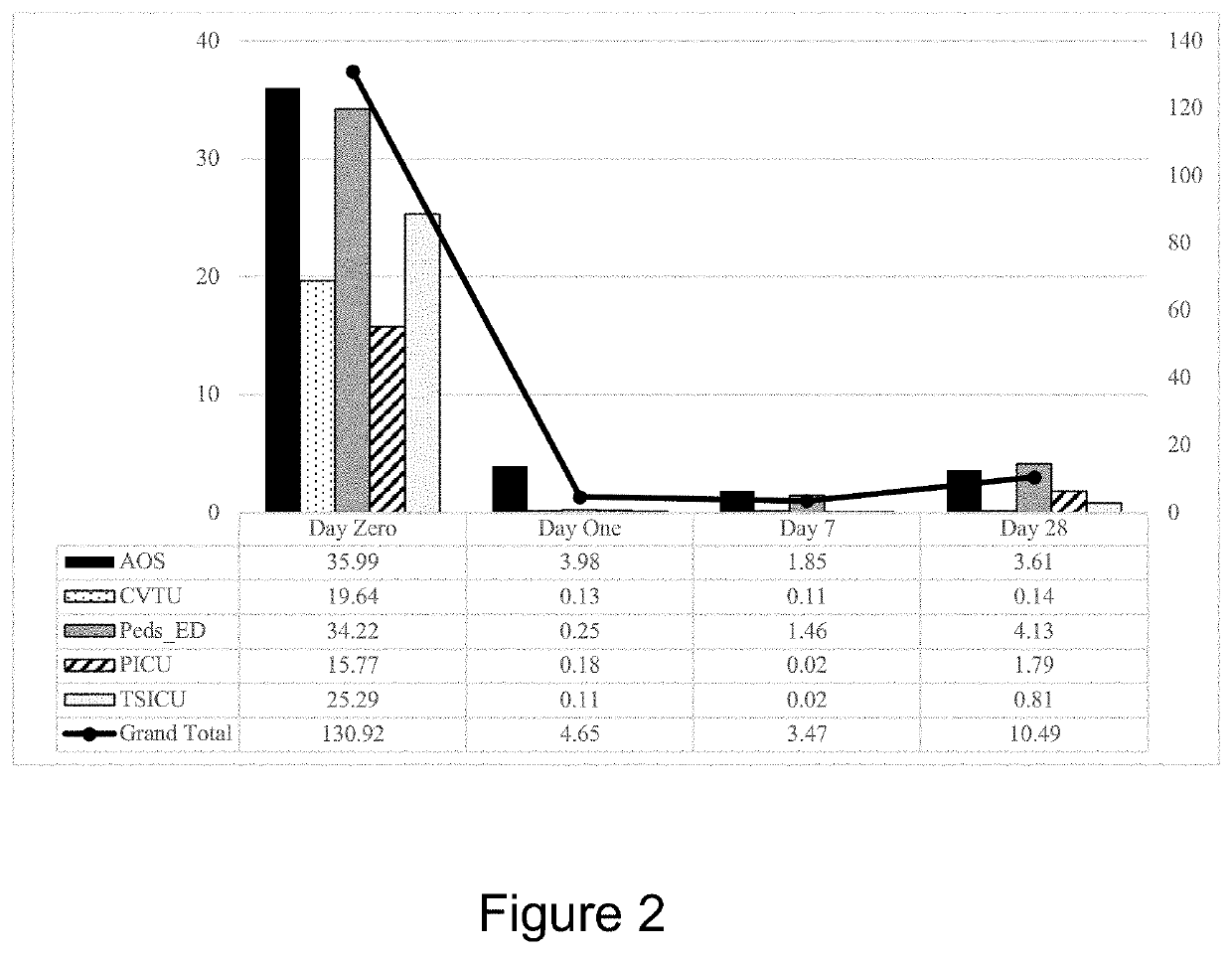Microbial Control on High-Touch Surfaces in Health Care Facilities
- Summary
- Abstract
- Description
- Claims
- Application Information
AI Technical Summary
Benefits of technology
Problems solved by technology
Method used
Image
Examples
embodiments
[0133]Embodiment 1: A method for establishing a DHP containing environment for microbial reduction comprising:[0134]installing at least one catalytic sail Dry Hydrogen Peroxide (DHP) generating device having a fresh, unused catalytic sail in an environment for microbial reduction;[0135]operating said at least one DHP generating device to produce and distribute DHP;[0136]providing a conditioning time for conditioning said environment with DHP and monitoring VOC and DHP concentrations;[0137]replacing the catalytic sail and establishing a DHP concentration of between 1 and 50 parts-per-billion (ppb) in said environment;[0138]maintaining DHP at a concentration of between 1 and 50 ppb for at least one week.[0139]Embodiment 2: The method of embodiment 1, wherein said conditioning time is at least one week or the time necessary for VOC concentrations to fall below zero when measured with a device having a sensitivity of 0.5 ppm.[0140]Embodiment 3: The method of embodiments Error! Reference...
example 1
tion of DHP Generating Units
[0195]Target spaces are evaluated prior to installation of DHP generating units to determine the number and placement of units required. Among the variables are the characteristics of the HVAC system such as the number of vents and returns, the air turnover, the humidity and temperature.
example 2
Hospital Cardiovascular / Telemetry Unit Studies
[0196]In this example, DHP is incorporated into a community hospital's existing heating ventilation and air conditioning (HVAC) system in a 34-bed Cardiovascular / Telemetry (CV-Tele or CVTL) unit. The study is designed to answer two basic and important questions: Does DHP reduce microbial contamination in the hospital unit? Can DHP reduce the observed rate of HAIs? The study consists of three phases. In phase one, culture samples are taken from hospital rooms and common work areas before and after standard disinfection of the rooms to establish a baseline of microbial colonization before the application of DHP technology. In phase two, samples are taken from the same rooms and work areas daily for one week after the institution of DHP technology. In phase three, the HAI rate in the CV-Tele unit is observed over a six-month period and compared to the same six-month window occurring in the previous year.
[0197]DHP technology is installed int...
PUM
 Login to View More
Login to View More Abstract
Description
Claims
Application Information
 Login to View More
Login to View More - R&D
- Intellectual Property
- Life Sciences
- Materials
- Tech Scout
- Unparalleled Data Quality
- Higher Quality Content
- 60% Fewer Hallucinations
Browse by: Latest US Patents, China's latest patents, Technical Efficacy Thesaurus, Application Domain, Technology Topic, Popular Technical Reports.
© 2025 PatSnap. All rights reserved.Legal|Privacy policy|Modern Slavery Act Transparency Statement|Sitemap|About US| Contact US: help@patsnap.com



